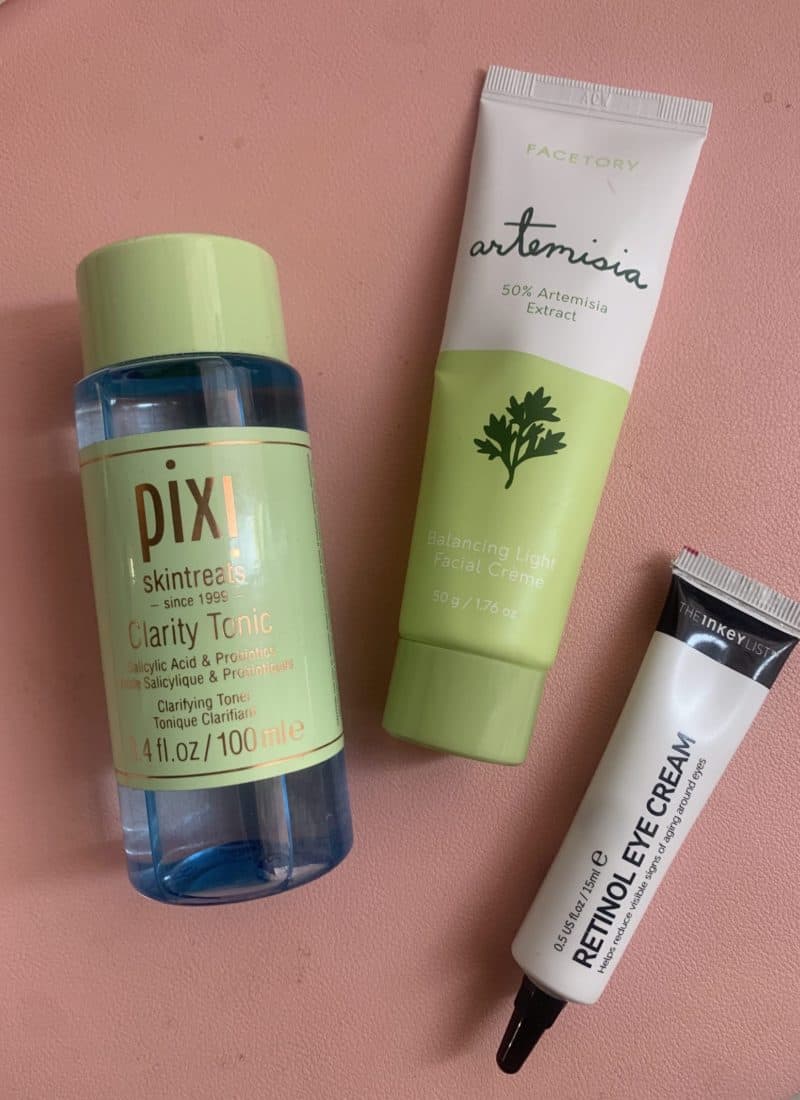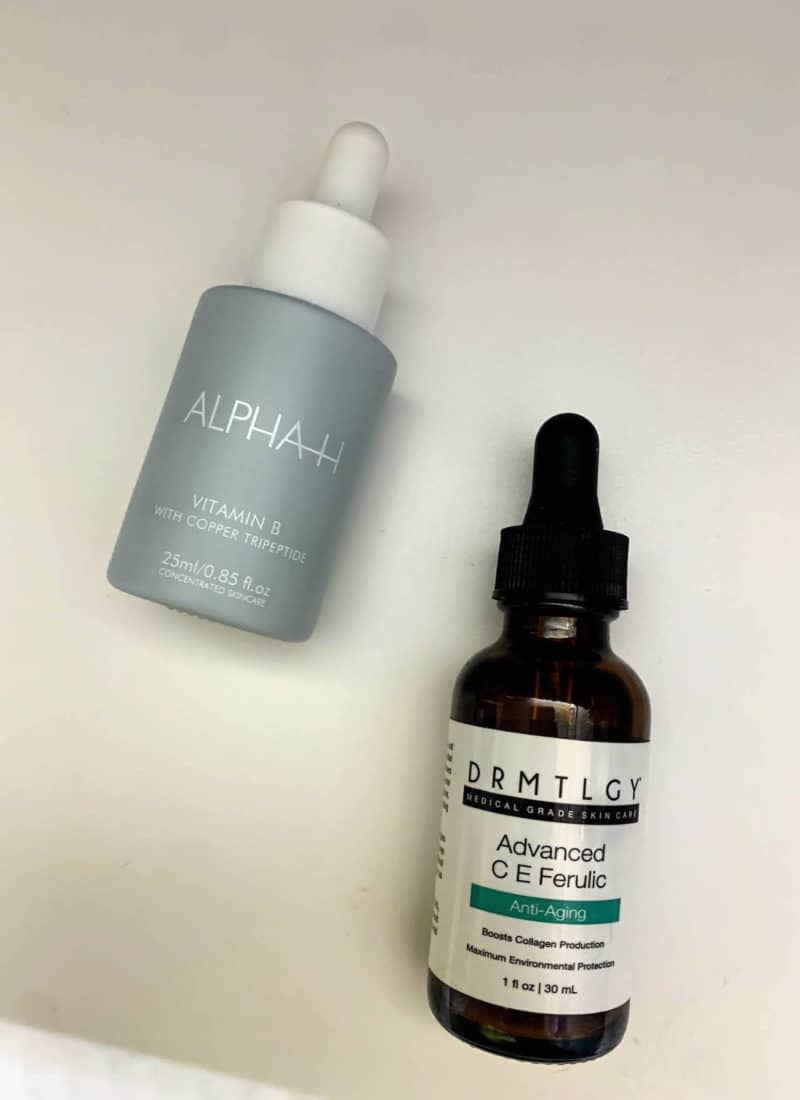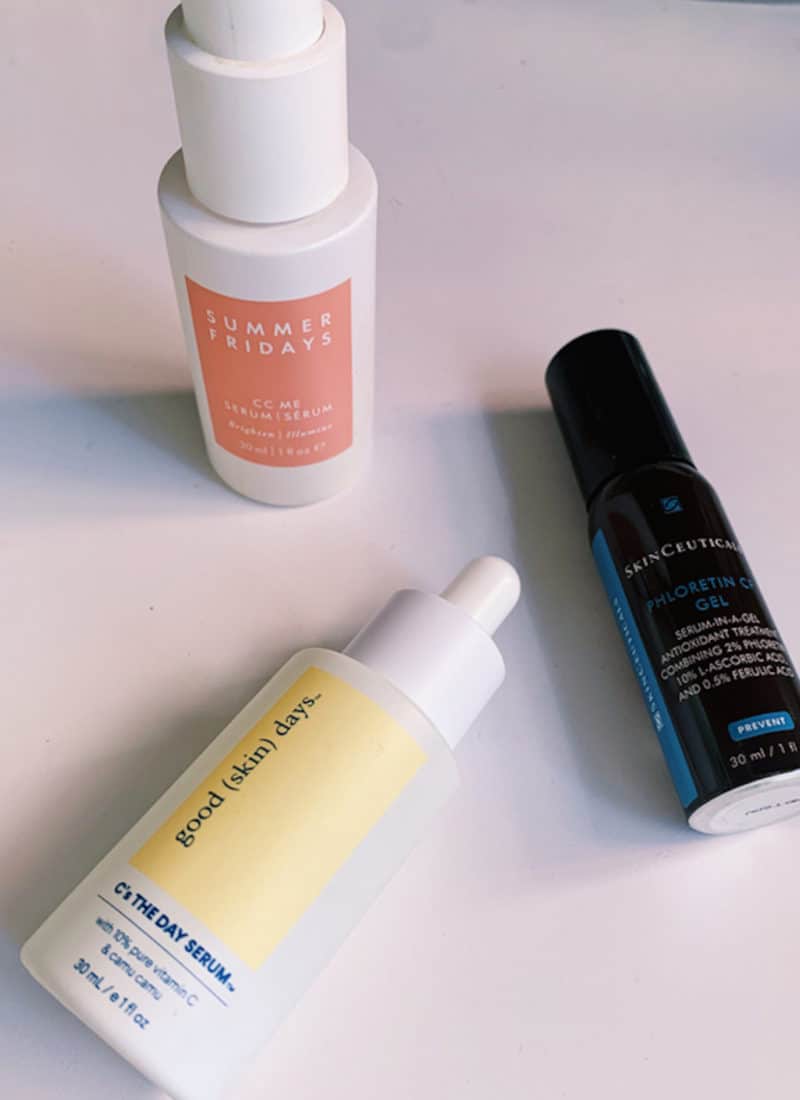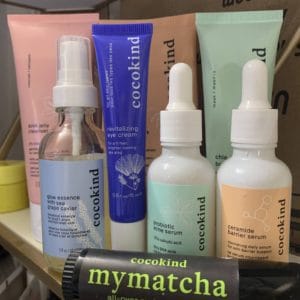Looking to add retinol to your skincare routine for the first time? Here’s my ultimate guide about retinol for beginners. We’re going to be talking about what retinol is, the best retinol products for beginners, how to use it, and tips and tricks on getting started!
What is retinol?
Retinol is a type of retinoid, AKA a vitamin a derivative. There are four main types of retinoids: retinyl palmitate/retinol ester, retinol, retinaldehyde, and retinoic acid (tretinoin). Read more about the difference between retinol vs retinoid here.
Retinol is a form of vitamin a that takes two conversions to become retinoic acid. This means that retinol will be much more gentle than pure retinoic acid like tretinoin. Due to its gentle nature, pure retinol will take longer to see results compared to retinoic acid, and its results may not be as dramatic.
However, retinol is a really great option for more sensitive skin or someone starting out with retinoids. Retinoids are notorious for being drying and irritating, so starting low and slow is a great way to build up your tolerance to vitamin a products.
As mentioned earlier, retinol is a vitamin a derivative that helps to resurface the skin and stimulate collagen production. This makes it a great treatment for fine lines/wrinkles and uneven skin texture/skin tone. Since retinol helps with removing dead skin cells, it can also help mild breakouts, though it’s not as clinically proven as tretinoin or adapalene for treating acne.
What type of retinol product should you use?
Now that you know what retinol is, let’s talk about the different types of retinol products: serum, cream, and oil. I’m not going to deep dive into it here, but you can also find retinol eye cream options to treat signs of aging around the eye area.
Retinol Serum
A retinol serum is probably what you first think of when you think of a retinol treatment. Serums are easy to incorporate into your routine and are typically more concentrated. Most retinol serums sink in easily and can be used after cleansing and before moisturizer.
Some of my favorite retinol serums are:
Versed Press Restart Retinol Serum (great for sensitive skin)
CeraVe Resurfacing Retinol Serum
Retinol Cream
Retinol creams are a great option for people that want to keep their routine simple. These are creams or moisturizers that have retinol in them, so they tend to be even more gentle than retinol serums due to their cream format. Retinol creams can be a part of a 2-step routine: Cleanse, then your retinol treatment. They’re also a great option for dry skin or sensitive skin types because they tend to have more hydrating ingredients like hyaluronic acid or glycerin.
The best retinol cream options:
Bliss Pure Retinol Deep Hydration Cream
Retinol Oil
One of my favorite forms of retinol are retinol oils! These are incredibly nourishing and are a great option for dry skin as well. Retinol oils are face oils that are formulated with retinol. In my personal experience, I’ve found that retinol oils tend to be more gentle than pure retinol serums. You can even use these on top of moisturizer if your have very dry skin.
Some of my favorite retinol oils:
Josh Rosebrook Active Infusion Oil (Retinol + Vitamin C oil)
What is the best retinol product for beginners?
Now that you know what the three main types of retinol products are, let’s talk about which one is the right one to add to your skin care routine.
Honestly, there’s lots of amazing retinol products out there on the market. You can find retinol products in varying strengths and in various formats, but I recommend looking for a gentle option to start.
Should you use a retinol oil, cream, or serum?
Retinol creams are great for people that what a simple routine, whereas retinol oils are great for dry skin because of the added nourishment. Retinol serums can be easily incorporated into your current routine vs the other two would potentially replace a product in your routine.
Generally, retinol creams and oils can be more gentle on the skin because they are in more nourishing formats. Some retinol creams and oils may have a lower percentage of retinol. However, there are also very gentle retinol serums like the Versed Press Restart!
Overall, I don’t think you can go wrong with any type of retinol you choose. Opt for gentle formulas – tip: look at how the product is marketed + customer reviews to figure this out. Don’t be afraid of starting with a SUPER gentle product, you can always build up to higher strengths depending on the results you’re looking for.
How should you add retinol to your skincare routine?
Now that you’ve chosen what type of retinol to use, let’s talk about how to add it to your routine.
First of all: start slowly!
Use your retinol only at night, and start out using it just 2-3 times a week to start. If your skin is super sensitive, you can even try just once or twice a week. Stay with this slow cadence and build up as tolerated. Some gentle retinol products can be used daily, but I’ve found the sweet spot for most people is 3-4 times a week.
Apply to dry skin
When you’re first starting out, apply your retinol products to dry skin. Applying products to damp skin can actually improve the absorption of the retinol, which can make it more irritating. Pat your skin dry, apply your retinol, then follow with moisturizer (if using a retinol serum).
Pause on other actives
To minimize potential for sensitivity or irritation, pause on any exfoliating acids that you’re using in your routine. Incorporate the retinol slowly and once your skin gets used to using retinol, you can start slowly reincorporating exfoliating acids back to your routine.
Retinol for beginners: tips and tricks
Now that you know how to incorporate a retinol serum (or cream/oil) into your routine, here are some easy tips and tricks you can use to incorporate a retinoid into your routine:
Try a richer moisturizer
Regardless of your skin type, retinol can be drying on the skin, especially when starting out. If you have oily skin and usually use a gel moisturizer, you may want to switch to a cream or lotion that provides a little extra nourishment. This will help reduce the potential for dry, flaky skin and can help minimize skin irritation.
Bonus points if your moisturizer has ingredients like hyaluronic acid for hydration and ceramides to keep your skin barrier strong. If you have a dry skin type, you may want to also use a nourishing oil to help prevent dryness.
Don’t apply too much
Just use enough product to cover your entire face. Using more of your retinol serum or treatment doesn’t help treat your acne or wrinkles faster. Instead, overusing retinol can cause more irritation and sensitivity.
You may need time to adjust
While retinol is an incredible skincare ingredient for treating and preventing wrinkles (and can help with acne for some), it’s important to know that it can be initially irritating and drying on the skin. Give your skin time to adjust by starting slowly, and stay consistent to see the best results! Within a few months, you should start noticing progress in your skin concern(s) and see healthier, smoother skin.
Have more “retinol for beginners” questions? Leave them below!
Product links are affiliate links. I do earn a small commission if you purchase from these links (with no additional cost to you), which supports me and my blog. Feel free to check out all of my affiliate/referral links or shop my favorites if you decide to shop. Thank you for your support!



